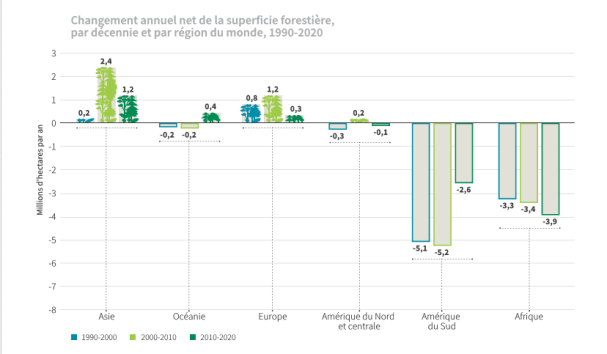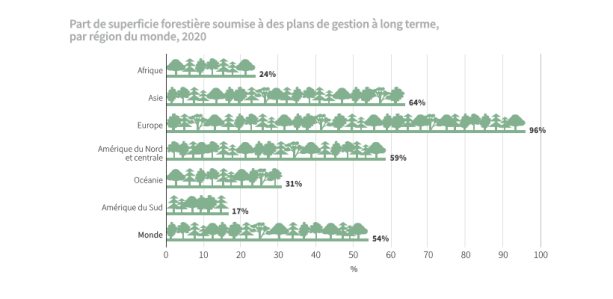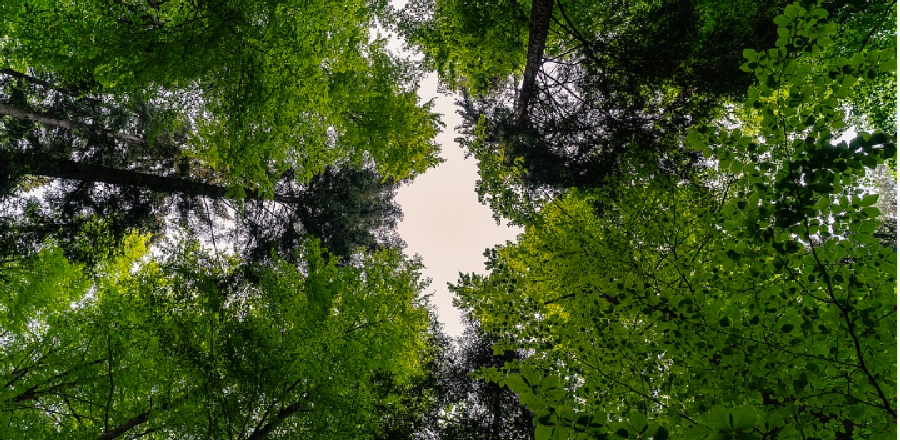Deforestation: Africa is doing badly according to FAO
The challenge: quantifying the impact of deforestation in Africa and understanding the reasons for it.
Published in early May, the latest report on forest resources from the Food and Agriculture Organization of the United Nations (FAO) shows a global deceleration of deforestation in the world… except in Africa.
Between 2010 and 2020, the continent lost 3.9 million hectares of forest area per year, compared to 3.4 million hectares between 2000 and 2010. Worse, « the rate of net loss of forest area has increased in Africa in each of the periods concerned since 1990 », the authors of the study note. The rest of the world is moving in the opposite direction, with Asia, Oceania and Europe recording a net increase in forest cover between 2010 and 2020 (see graph below). Even South America, another poor performer in the ranking (2.6 million hectares of forest area lost per year between 2010-2020), saw the rate of forest destruction halved in a decade (from 5.2 million hectares of forest area lost per year between 2000-2010 to 2.6 million between 2010-2020).

Forest management
The FAO teams also note that only 24% of African forests are subject to long-term management plans (see graph below); a proportion out of all proportion to what is done elsewhere (96% in Europe, 64% in Asia and 59% in North and Central America), which probably explains why illegal logging and exploitation of timber often remain poorly controlled.

A phenomenon that affects the Congo Basin, the second green lung of the planet after the Amazon, in particular. This forest massif, five times the size of France (3 million km2), in fact represents the overwhelming majority of the continent’s forested area. In relative terms, however, other African regions are even more affected by deforestation. Corroborating the conclusions of the FAO report, a study by the environmental NGO Global Forest Watch, published at the end of April 2020 and based, among other things, on satellite data, points out that it is in Ghana and Côte d’Ivoire that the loss of forest areas has accelerated the most in recent years, with the rate of destruction of primary forests increasing by 60% and 26% respectively in these two West African countries, as a direct consequence of « illegal mining » and « the expansion of cocoa farming ».
Regulation
A threat to the ecosystem that African states are taking more and more seriously. Several countries have already adopted more restrictive regulatory measures, such as Côte d’Ivoire, which in July 2019 promulgated a new forestry code that will involve private stakeholders in the sector more closely while strengthening sanctions. It was about time: estimated at 37% of the national territory in 1960, the Ivorian forest massif now represents less than 10% of it.
Read also: Côte d’Ivoire adopts a new forestry code
Read also: Ghana and Côte d’Ivoire, donkey hats for deforestation
